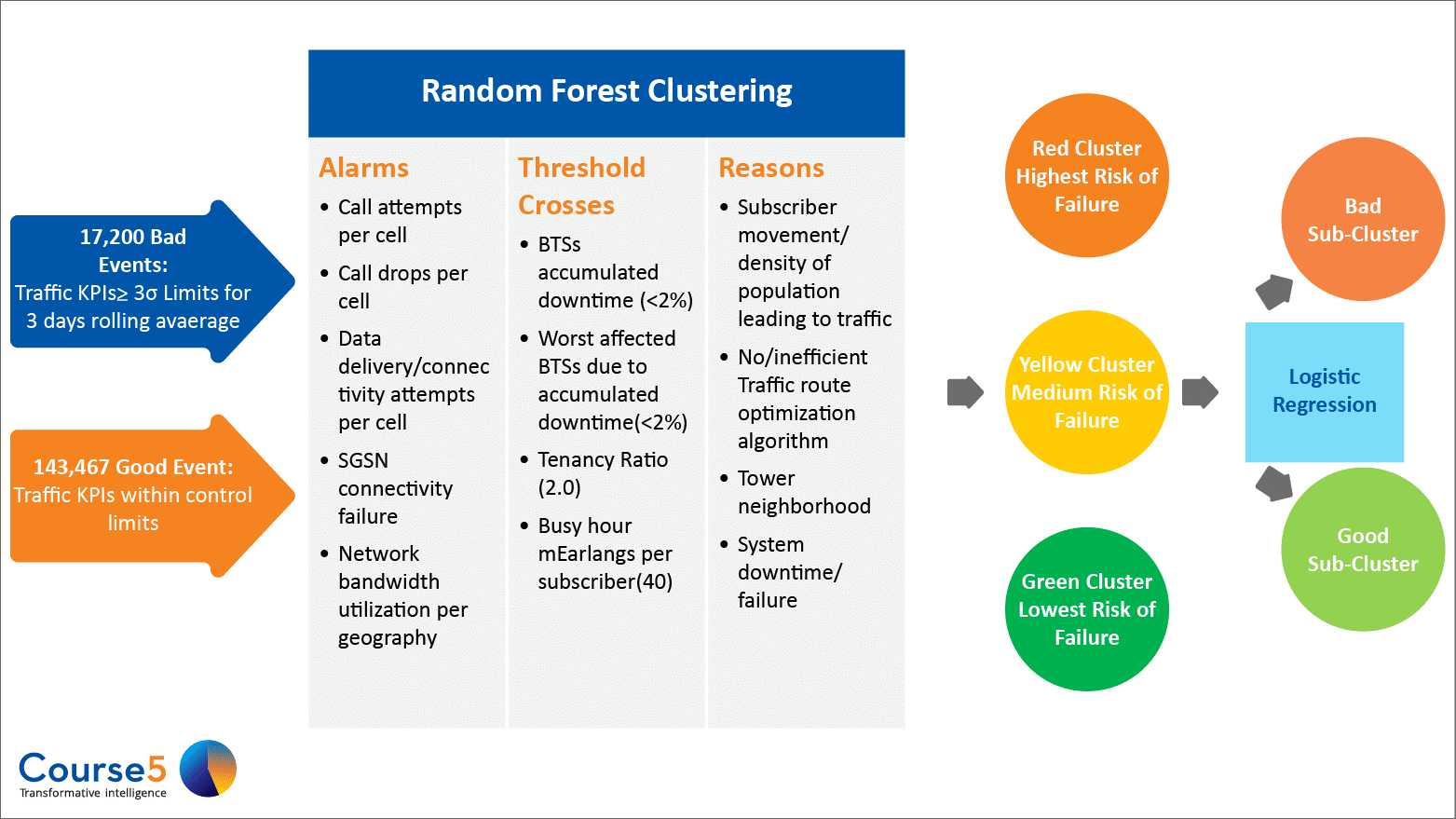Advanced Analytics: Deriving Actionable Insights from Cross-Channel Data
The problem is that 50% of the enterprise data collected remains unused for advanced analytics. It showcases the real trouble is not with accumulating data, but the inability to use it the right way due to resource shortages.
A few years ago, customer data would be ingested from only a handful of channels, but there were not enough tools or procedures to harness them to their full potential. With massive technological advancements, even though the number of channels has increased significantly, decision-makers have been armed with advanced analytics solutions to harness cross-channel data and derive actionable insights.
We recently had an interesting webinar with Laura Wheeler, one of the former business leaders at a multinational retail and eCommerce giant. We spoke at length about the rapidly evolving retail landscape, and the increasing need for retailers to adopt advanced analytics and adapt to the times.
Check out a recording of the webinar, and get a detailed view of how major players in the retail space are leveraging analytics to transform their businesses. Understand the importance of advanced analytics in today’s omnichannel environment and the need for an agile and iterative analytics model.
So, what is advanced analytics, and how can one use cross-channel data for optimizing their decision-making process?
An Introduction to Advanced Analytics
Advanced analytics is the AI-powered analysis of data, using advanced technologies such as machine learning (ML) and Natural Language Processing (NLP). It goes beyond the capabilities of traditional business intelligence (BI) solutions and automates tasks ranging from data mining, text mining, simulation, and multivariate statistics, to network analytics and forecasting. All of it comes together to dissect patterns, identify trends, uncover actionable insights, predict outcomes, and even generate prescriptive recommendations for its users.
Consider the example of an international insurance firm. It offers a plethora of insurance products to its customers across regions. All of it starts with a call-back option accepted by the customer. With the customer information filled in, an advisor is assigned who calls the customer to understand their preference.
Today, there are multiple sources of customer data – web engagement, calls, IoT devices, online and offline surveys, all of which come together to generate an accurate understanding of the customer’s data. Data analytics has evolved to account for these multiple data sources, and use them for mapping the customer journey across touchpoints and better understanding customers.
But how do they effectively collate and analyze such massive volumes of diverse data? This is where advanced analytics comes into play.
The Importance of Advanced Analytics
Advanced analytics enables businesses to not only automate the examination of cross-channel data but identify hidden value and new opportunities for revenue growth.
The AI-powered analytics solution enables businesses to garner deeper insights into patterns, trends, and customer behavior; in near real time.
Thus, improving predictive capabilities and helping companies be more proactive rather than reactive when it concerns business decisions.
The actionable insights help companies safeguard themselves from future uncertainties, uncover new business opportunities, find new ways to solve existing problems, and enhance overall operational efficiency.
With the help of advanced analytics, managers and marketers can –
- Improve the effectiveness of the campaigns by utilizing deeper and more accurate customer insights about customer behavior, preferences, and pain points.
- Have a better knowledge of potential machine breakdowns or wear-and-tear, and take steps in advance to mitigate risks and avoid downtime.
- It can generate models to simulate real-life scenarios, significantly improving the efficacy of decisions taken.
In summary, with the help of advanced analytics techniques, organizations can solve problems that business intelligence reporting is incapable of at this point. This helps organizations connect better with their customers, and build stronger bonds for long-term engagements.
Techniques used for Advanced Analytics
Advanced analytics can be divided into the following categories depending on the use cases they serve:

Descriptive Modeling
The term ‘descriptive modeling’ indicates a mathematical system to describe the connection between factors behind occurrences of some real-world events. Used mainly in marketing and advertising, this model seeks to increase campaign efficiency by quantifying the prospective customers’ behavior and interests.
The collated data from descriptive modeling is used to understand how a customer may react to different marketing tactics marketers use. Further, these can also contribute to efficient product placements and result in higher conversions.
Here are the main aspects of this advanced analytics technique:
- Behavior-based Segmentation
It is used to decipher customer behavior and use it to push products and services that better cater to their needs. - Customer Segmentation
It helps differentiate customers using detailed insights to ensure a more personalized marketing experience. - Need-based Segmentation
It specializes in understanding the underlying needs of customers and their motivations to help companies curate product/service umbrellas better and push them at the right time. - Value-based Segmentation
It looks too different customers based on the value they offer to the organization, enabling marketers to quantify and adjust their endeavors based on the value on offer.

Predictive Analytics
The term ‘predictive analytics’ refers to a model that looks to predict upcoming events. This advanced analytics technique uses data engineering and a plethora of advanced tools to get rid of guesswork.
Predictive analytics enables marketers to take a better guess at the customer’s response to a new advertising campaign or a new product/service, allowing them to make better strategies. It analyzes cross-channel data using ML and predictive modeling, to enable marketers to develop their upcoming campaigns for higher efficacy.

Text Analytics
Text analytics involves the employment of NLP, an ML system with the ability to study unstructured text that has been generated via speech or writing. It can decode complex linguistic patterns to provide contextual insights into cross-channel customer data and unearth underlying patterns.
Text analytics can be deployed in myriad ways by marketers to serve different purposes. It is also capable of processing data much faster compared to its human counterparts, which not only ensures automated and faster insight generation, but the results are free from human error and bias.
The ability to process data faster means that marketers can now skim through unending conversations more quickly, and figure out problems more accurately than resorting to guesswork for decision-making.

Simulation and Optimization
Advanced analytics techniques involve studying data and creating potential simulations to develop data-backed recommendations. The simulations help to determine and optimize the campaign which will contribute the most to ROI before the campaign goes live.
It uses a slew of ML models to go through different scenarios and suggest the ones that fit the bill the best. These are especially useful for systems where marketers have too many variables to account for, but are unsure of how they would play out in real-time.
A Course5 Case Study for Advanced Analytics
The client, a leading multinational telecom company, wanted an early warning system for any potential network faults. They wished to identify these potential failures to allow a pre-emptive corrective action and targeted communication with subscribers.
To deliver on the client’s requirements, Course5 developed a Data Aggregation Layer that provided the historical network performance data and subscriber information. After this, a region-level clustering of network assets was conducted, using ML and clustering techniques.
A predictive model was developed for each location cluster using ML. This helped to identify the threshold values and the correlated KPIs leading to faults, through the predictive model. The alerts generated were further processed by the ‘Alert Prioritization Algorithm’ for determining actionable alerts.
The Early Warning Alert prioritization algorithm that Course5 developed, optimized the ‘action plans’ with defined impact parameters. The algorithm allowed the client to take corrective actions depending on the level of failure, in a timely and efficient manner.
The Predictive Model further allowed the client to bring the traffic KPIs within control limits.

Advanced Analytics is the Future
With customer data playing a more integral role in decision-making, marketers were looking to find ways to utilize its potential to the fullest. The timely arrival of advanced analytics has enabled companies to harness the slew of customer channels better and use them for decision-making.
Moreover, given the usage of the available cross-channel data, the correct usage can also improve products and services, and contribute to improved development and marketing too. It would enable companies to generate actionable insights that they can use to better cater to their customers.
Don’t miss our next article!
Sign up to get the latest perspectives on analytics, insights, and AI.




